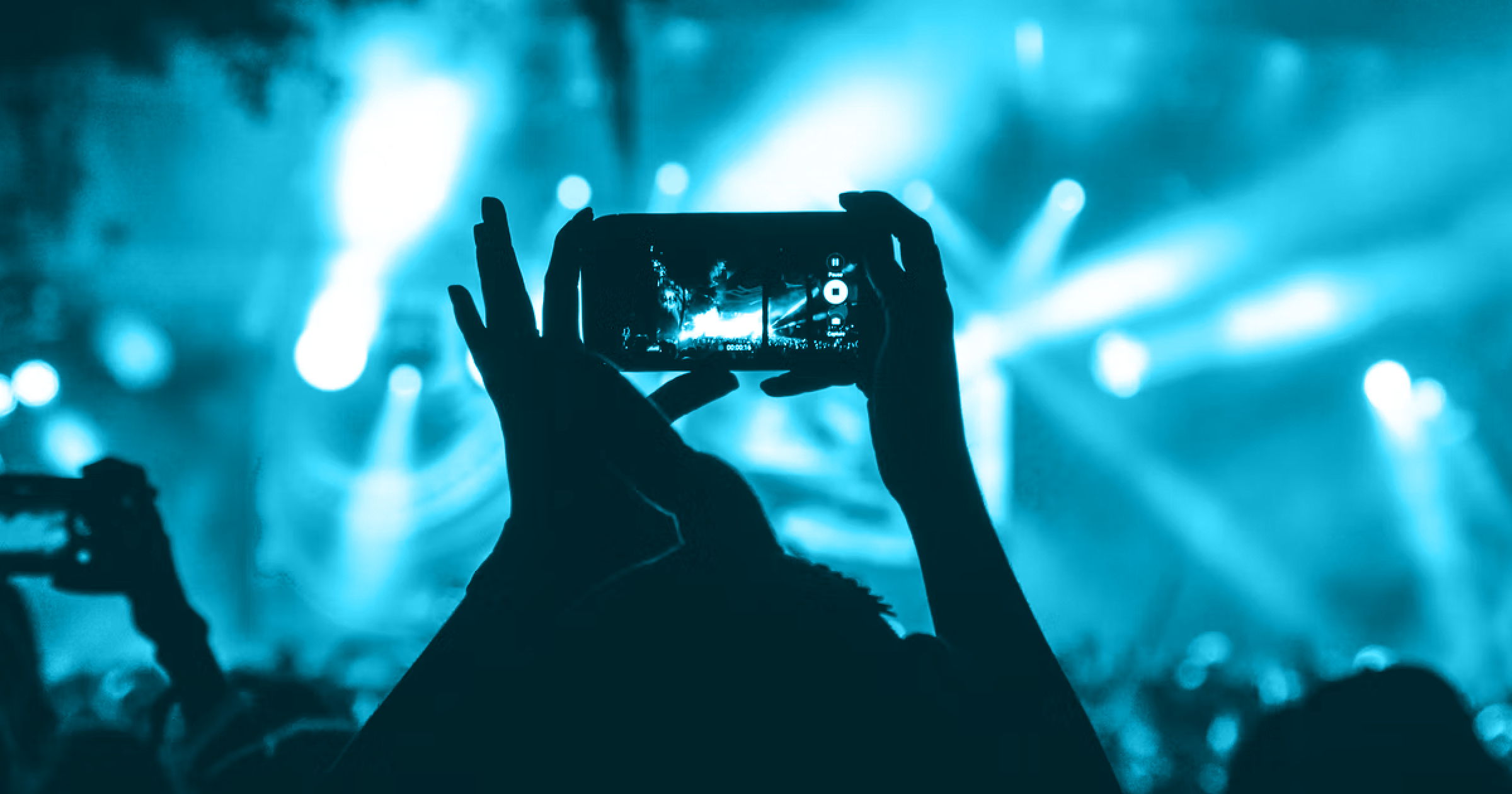
How to write a press release for your event according to the experts (with real-life examples)
Expert advice on how to announce and follow up on your big day.
Writing a press release for an event takes a slightly different approach to writing a generic press release, and you need to take particular care around your presentation and when you follow up.
I'm sure you don't need me to go over the basics, so instead I've asked several experienced comms experts to share their top advice for writing an event press release, and dissected a few real-life press release examples to show these top tips in action. So, let's get to it!
- Writing a press release for a planned event
- Sharing a calendar of upcoming events
- Announcing an online event (takes more than a press release)
- Following up after event launch
- Learning from real-life event press release examples
- In summary – the dos and don'ts
For the purposes of this guide, I've included timely events like exhibitions and theatrical runs in the "events press release" category.
This part follows most closely the conventional press release template, with a more pronounced focus on timeliness and the people involved.
Include, clearly, all the pertinent details:
- What, when, who, why, where
- Ticket or registration info
- Names of the key people involved
- Quotes & reviews if you have them
- Media assets
- Opportunities for interviews, press passes & exclusive content
- Contact details
Be clear, concise and direct.
As a news producer, I remember seeing thousands of emails a day come through our general tip inbox. Most of those were press releases from companies or local agencies. Even then, some of the best press releases weren’t formal at all – at least, not like they taught in school. They were conversational and got straight to the point.
Now, on the other side of the coin, as a public relations professional, I have found that producers appreciate how direct I am with pitches, without all the fluff.
During this more virtual environment we find ourselves in, it is more crucial than ever to provide the information in the most concise and clear way possible. While your company or client may want the press release to puff up their expertise, it’s not the best way to achieve your media relations goals.
Always consider your audience first and the purpose behind your release. Some topics may be best served as a blog or social post, rather than involving the media.
If you're writing on behalf of an agency, organization or name with a reputation for putting on events, then it's perfectly acceptable (and often expected) to send out a press release with an overview of all your planned events for the season. This comes naturally to theatres and galleries, for whom events are their bread and butter, but there's no reason why a brand can't do the same so long as your contacts are familiar with you and know that events are part of your regular line-up.
The goal of sharing a calendar of upcoming events is a little different from that of a normal events press release, and should be used in conjunction with the latter. Rather than aiming for coverage right off the bat, what you want is to prime people for each event in your line-up. Treat this as your opportunity to bookmark space in contacts' calendars, arrange any exclusive interviews or content, and generally plan ahead.
Click on the following press release to see how Pandex Hotels sum up their upcoming events:
Example: Pandox Hotels announces spring events line-up

As many of us discovered during lockdown, online events are a bit of a different animal. Unless it's something very big – think Apple's product announcements – ask yourself whether you need to push out a formal press release at all. If you're hosting a webinar or live interview, a better approach may well be to share it directly through your company blog, newsletter and social media.
Consider streaming it to multiple social platforms using a service like Restream, effectively bringing your content in front of your audience rather than working to attract people to come to you. It's always more effective to meet people on their own ground.
Webinars and e-conferences are one thing (ok, technically two), but what about if your project is more meaty – say, an exhibition?
That's precisely the challenge that Suzanne de Lange, head of Press & Communication at DIVA – Antwerp's premier museum of diamonds, jewelry and silver – had to deal with.
As public places were forced to shut their doors in the wake of lockdown announcements, the museum had to find a new way to cater for its audience and stop people from missing out. They had to go virtual.

"We communicated mainly via our social media accounts, Facebook and Instagram. We did a virtual tour in our museum for our temporary exhibition," says Suzanne.
They would still create a press release, but alongside that they would be careful to create an online gallery of media assets and stories that could convey the narrative of their exhibition for audiences that couldn't be there in person. It turned out to be a great benefit even after lockdown restrictions were lifted.
There are always people who are interested in your museum, but they don't have the money or time to physically visit. We wanted to share our story internationally.

Of course, your work doesn't end once your event goes live. Next comes the follow-up, which should, again, be a little different to your regular approach.
With your event follow-up email, aim to paint a spirited picture of what went on in case the person you're speaking to could not be there in person. Include quotes from the event, photographs and video recordings if at all possible. If you have already had reviews or feedback on your event, add them in; a 5-star review from a big name is a powerful thing to lead with.
One thing to keep in mind when sharing your multimedia: make sure it doesn't bog down your email. Excessive attachments and suspicious download links can land your message in spam, so it's best to use a hosting service like Google Drive, WeTransfer or Dropbox to share hefty files. (If you're using Prezly for your press release distribution, you don't have to worry about this as we take care of the hosting for you, while keeping your press releases looking beautiful.)
In the lead up to an event, it's easy to get caught up in making sure the event goes off without a hitch – focusing on PR and marketing to ensure it is well attended and making sure everything is set for the event itself.
But, depending on the nature of the event, it can be equally important to make sure the event itself receives press coverage. For example, if you are hosting an opening of an exhibit and will have incredible speakers present, you'll want coverage of what took place at the event (and of the exhibit).
Hopefully, you've already sent out a media advisory (at least a week in advance) to reporters to invite them to attend and cover the event. However, oftentimes, reporters are unable to attend your event but are happy to cover the story as though they were there in-person if they are given everything they need to do so: the details, quotes, photos, and (ideally) video footage.
We recommend sending out an embargoed press release to reporters the day before your event. If speeches are being given and are scripted, you can include direct quotes from those in your release. Let the reporters know that you'll follow-up with photos and video footage from the event ASAP after the event concludes. During the event, make sure to capture high-quality photos, videos of any speeches, and b-roll of the event. As soon as you can after the event concludes, conduct follow-up by sending the photos and videos to the reporters.
Let's look at some successful real-life examples for ideas on what assets and formatting to include (guide on formatting your press release) when announcing your event.
This has the advantage of relating the salient points of your press release to your contact at a glance, and is a particular advantage if you have a household name in your roster.
Example: Light & Life Announces New Year’s Eve Event with David Guetta in Brooklyn Warehouse

Who? What? When? Where?
These questions are even more important when it comes to promoting an event. (The "Why?" should be there too, but you can take more time over it.)
Take a look at the below example of a theatrical press release and notice just how much information they've managed to include, not to mention media assets, while keeping their content immensely scannable:
Example: Mustard - A surreal comedy about friends, real and imagined.

As Megan mentioned above, not every journalist is going to be able to make it to your show – so give them all the media you can to make them feel like they were there. It will help them reflect the feeling of your event in their write-up and pair it with first-hand footage of what actually went on.
If you can, embed your media directly into your press release so that it has a better visual impact and to make it easier for your contact to navigate. If you're worried about overloading your email with multimedia and ending up in spam, use a service like Prezly to host and distribute your press releases, or link to your media assets online – here's how you can set up an online press kit to do just that.
The other reason to lead with a bold visual? It's eye-catching. Better yet, it conveys the spirit of your event, setting the theme for the reader before they've even read a word.
Example: Feminist voices from the Middle East, North Africa & Europe speak out

Brevity being the soul of wit, it pays to keep your press releases to 500 words or fewer; in fact, the optimal press release length is 300 to 400 words.
Take a look at the below example for a good illustration of how a small amount of text can relate all the salient points of an announcement. For a fun exercise, have a think: what do you like about this press release? How does it make you feel? What could you do to improve it?
Example: Art event press release example

If your topic is flippant or theatrical, go heavy on the visuals; if you're announcing an exhibition of rare archeological finds or hosting an awards ceremony, include greater textual context.
Frame your story with details about why it's newsworthy, particularly if you're dealing with a niche subject, and include expert quotes in your press release.
Remember, unlike with other types of news, you will likely want your event to be covered in generalist publications, not just those in your niche. Make sure it's easy for the journalist – and the public – to understand what your event is and why they should get excited about it.
Take DIVA's museum exhibition launch press release for example:
Example: Event press release example

See more event press release examples ▸
Do:
- Lead with visuals
- Be clear on the who, what, where and when
- Tell people how they can attend and make it easy for them to register
- Write for a human, not a robot – that means using "you", "I" and conversational language
- Provide context and expert quotes, particularly for more complex events like exhibitions
- If you have them, include reviews of your event or its previous iterations ⭐️⭐️⭐️⭐️⭐️
- Include a schedule and a speaker line-up with bios if relevant (for theatre, make mention of the writer, director and main cast)
- Add in as much multimedia as you can
- After event launch, follow up with media assets and quotes for anyone who couldn't be there in person
- Consider creating online resources for your event and incorporating social media into your launch (particularly if your event is online)
- Clearly state your contact details as well as the event website, social media profiles and any other relevant information
Don't:
- CAPS LOCK your pitch subject line or go wild with the punctuation
- Include heavy attachments in your emails (instead use a hosting service or create an online press kit for your event)
- Do anything in this list of common press release writing mistakes to avoid!
Have something to add that I've missed? Let me know :)
Kate Bystrova
Published March 2022


